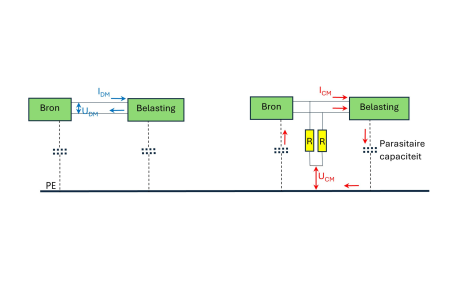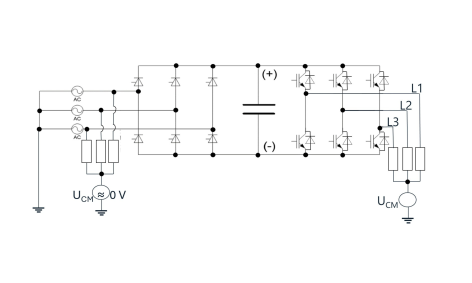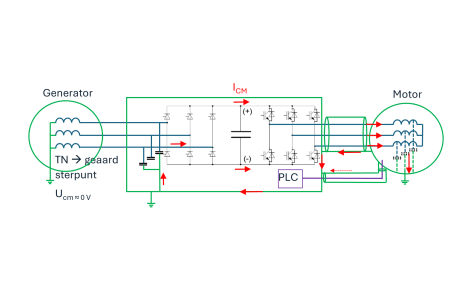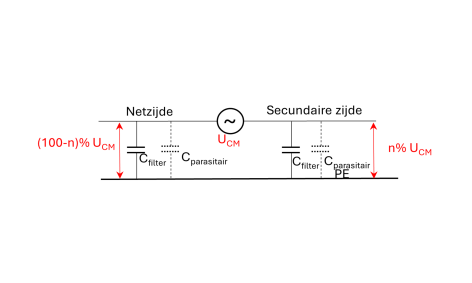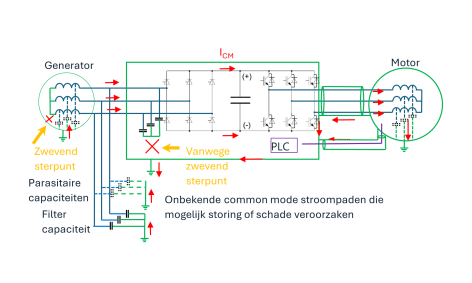New technical developments
With the introduction of new energy sources, such as fuel cells, solar panels and generators that run at variable speed, energy storage in batteries and flywheels, and the focus on minimizing energy loss, it is becoming increasingly interesting to work with DC grids. However, in order to convert this DC voltage into other DC voltages or AC voltages, switching converters are needed, which can therefore generate common mode. In addition, many (smaller) transformers are being replaced by switching power supplies, which can also cause common mode.
This has two major consequences. Firstly, the common mode disturbance increases and secondly, it is more common to use a frequency converter as a microgrid converter, which does not feed a motor but a variety of small AC loads. Motors can still be designed to handle common mode voltage with better insulation, but for this quantity of small AC loads this is much more difficult.
Challenges in standards development
This has received particular attention from two technical committees within the IEC, because they also work extensively with networks with a floating neutral point. These are:
- TC18: Electrical installations on ships and on mobile and fixed units on water
- TC82: Solar energy systems
Together with TC77 (Electromagnetic Compatibility) and CISPR (International Special Committee on Radio Interference) these committees are looking for ways to define common mode in standards. The problem with the current CISPR standards is that they are not really suitable to say anything about common mode levels in floating networks or for equipment intended for floating networks. CISPR uses LISNs (Line Impedance Stabilisation Networks) which have large capacitances to earth. By connecting these devices the ratio of capacitance to earth between the input and output of the common mode source is changed and therefore also the measured voltage. In addition, experience has shown that connecting LISNs and CISPR probes regularly leads to damage when they are connected to floating networks. The common mode currents are so large that LISNs burn out, or the common mode voltage, especially between 2 and 150 kHz, is so high that CISPR 16 probes become defective. In addition, the LISNs can also influence integrated ground fault monitoring in inverters in such a way that the inverters switch off for safety reasons.
New developments
In order to find a way to say something about the height of common mode signals, new measurement methods are being looked at. For example, TC18 is working on measurement networks that have a high impedance to earth in order to minimize the influence of the common mode voltage. TC82 looks at measurements with low-frequency magnetic antennas in which the impedance to earth is not also influenced.
Conclusion
With the continuous development in electrical engineering, new challenges continue to arise in the field of EMC. Within the IEC, a team of stakeholders is working on new methods and limits to deal with these new electrical engineering developments. It is important that a balance remains between reliable equipment and additional costs for additional measures in the equipment and measurements.
Standardization work
If you are interested in standardization work, you can find more information here: https://www.nen.nl/normontwikkeling
